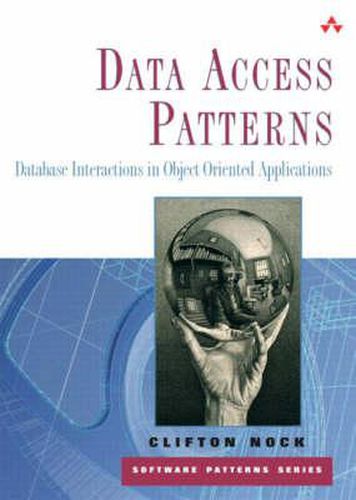Readings Newsletter
Become a Readings Member to make your shopping experience even easier.
Sign in or sign up for free!
You’re not far away from qualifying for FREE standard shipping within Australia
You’ve qualified for FREE standard shipping within Australia
The cart is loading…






25 proven patterns for improving data access and application performance Efficient, high-quality data access code is crucial to the performance and usability of virtually any enterprise application–and there’s no better way to improve an existing system than to optimize its data access code. Regardless of database engine, platform, language, or application, developers repeatedly encounter the same relational database access challenges. In Data Access Patterns, Clifton Nock identifies 25 proven solutions, presenting each one in the form of a clear, easy-to-use pattern. These patterns solve an exceptionally wide range of problems including creating efficient database-independent applications, hiding obscure database semantics from users, speeding database resource initialization, simplifying development and maintenance, improving support for concurrency and transactions, and eliminating data access bottlenecks. Every pattern is illustrated with fully commented Java/JDBC code examples, as well as UML diagrams representing interfaces, classes, and relationships.The patterns are organized into five categories: *Decoupling Patterns: Build cleaner, more reliable systems by decoupling data access code from other application logic *Resource Patterns: Manage relational database resources more efficiently *Input/Output Patterns: Simplify I/O operations by translating consistently between physical relational data and domain object representations of that data *Cache Patterns: Use caching strategically, to optimize the tradeoffs between data access optimization and cache overhead *Concurrency Patterns: Implement concurrency and transactions more effectively and reliably Data Access Patterns demystifies techniques that have traditionally been used only in the most robust data access solutions–making those techniques practical for every software developer, architect, and designer.
$9.00 standard shipping within Australia
FREE standard shipping within Australia for orders over $100.00
Express & International shipping calculated at checkout
25 proven patterns for improving data access and application performance Efficient, high-quality data access code is crucial to the performance and usability of virtually any enterprise application–and there’s no better way to improve an existing system than to optimize its data access code. Regardless of database engine, platform, language, or application, developers repeatedly encounter the same relational database access challenges. In Data Access Patterns, Clifton Nock identifies 25 proven solutions, presenting each one in the form of a clear, easy-to-use pattern. These patterns solve an exceptionally wide range of problems including creating efficient database-independent applications, hiding obscure database semantics from users, speeding database resource initialization, simplifying development and maintenance, improving support for concurrency and transactions, and eliminating data access bottlenecks. Every pattern is illustrated with fully commented Java/JDBC code examples, as well as UML diagrams representing interfaces, classes, and relationships.The patterns are organized into five categories: *Decoupling Patterns: Build cleaner, more reliable systems by decoupling data access code from other application logic *Resource Patterns: Manage relational database resources more efficiently *Input/Output Patterns: Simplify I/O operations by translating consistently between physical relational data and domain object representations of that data *Cache Patterns: Use caching strategically, to optimize the tradeoffs between data access optimization and cache overhead *Concurrency Patterns: Implement concurrency and transactions more effectively and reliably Data Access Patterns demystifies techniques that have traditionally been used only in the most robust data access solutions–making those techniques practical for every software developer, architect, and designer.